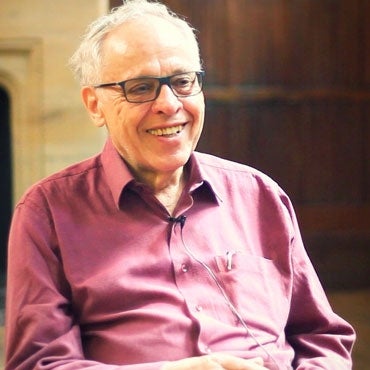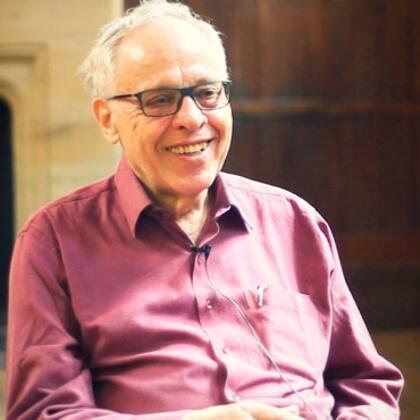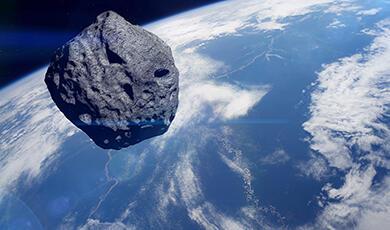Should We Trust a Theory?
Share
- Details
- Text
- Audio
- Downloads
- Extra Reading
Can a scientific theory ever be confirmed? Must a scientific theory be falsifiable? These are deep questions that have fascinated philosophers from David Hume to Karl Popper, and continue to be at the core of scientific reasoning. Theories such as that of the multiverse or almost all string theories make no empirically verifiable predictions. Does this move them into the realm of metaphysics, or even quasiscience? Modern philosophers of science have moved on beyond the notion of falsifiability. They refer to the old school who believed in empirical testing of scientific theories as the Popperazzi. Now one applies statistical inference, pioneered by Reverend Thomas Bayes in the 19th century, to infer the likelihood that a theory is correct. Philosophers argue that while one can never prove that a theory of the universe is correct, one can increase the level confidence in the theory even without any empirical tests, if the theory satisfies certain conditions that I will explain. In this way one can provide non-empirical support for string theory and even the theory of the multiverse.
Download Text
1 February 2017
Should We Trust a Theory?
Professor Joseph Silk
Can a scientific theory ever be confirmed? Must a scientific theory be falsifiable? These are deep questions that have fascinated philosophers from David Hume to Karl Popper, and continue to be at the core of scientific reasoning. Theories such as that of the multiverse or almost all string theories make no empirically verifiable predictions. Does this move them into the realm of metaphysics, or even quasi-science? Modern philosophers of science have moved on beyond the notion of falsifiability. They refer to the old school who believed in empirical testing of scientific theories as the Popperazzi. Now one applies statistical inference, pioneered by Reverend Thomas Bayes in the 19th century, to infer the likelihood that a theory is correct. Philosophers argue that while one can never prove that a theory of the universe is correct, one can increase the level confidence in the theory even without any empirical tests, if the theory satisfies certain conditions that I will explain. In this way one can provide non-empirical support for string theory and even the theory of the multiverse.
Here are a few examples of theories that we might someday learn to trust. And some that are intrinsically untrustworthy.
Inflation
Can we ever prove the theory of inflation? Cosmologists often pose this question. But it is a poorly posed question. There is no “theory of inflation”, rather, there are many theories. But there is light at the end of the tunnel. There are predictions of inflation, or at least of some subset of inflation models. It may take a century but the way forward is clear.
Cosmologists thrive on speculation. This is healthy when fed by evidence and data, but less so when motivated by theory. The anthropic principle is a notorious example. It is a speculation motivated by the lack of a solution to a compelling problem, not by evidence. It has been dubbed the greatest problem in physics, but that is not nearly enough to motivate
Multiverse
The multiverse is in a similar situation. There is theory: eternal inflation.
In this inflationary theory, the universe is so large that inflation spontaneously occurs somewhere, at any time. Eternal inflation is one of hundreds of inflation theories. And there are no doubt many others.
But not only is there no data on either eternal inflation or on its spawn, the multiverse, there can never be any data on the multiverse. By construction, we simply can never see the multiverse. It is causally disconnected from us. True, violating the laws of physics might get us there. But that is an untrustworthy option. It is a possibility, certainly, but all of human experience tells us that only a fool would put trust in this as a direction worth pursuing. Physics has simply gotten us so far that the odds of it being radically wrong must be infinitesimal.
The multiverse might or might not exist, but no physicist should waste his or her time chasing the unchaseable.
Probability
Now I have to admit, that is a Bayesian view. The 18th century mathematician Reverend Thomas Bayes, inventor of the modern theory of statistical probability, would be shaking his head in consternation at this point. Bayes is buried nearby in Bunhill Fields, between Old Street and City Road.
Bayesian odds are based on priors. These are based in turn on the observer’s experience, which in turn is based on data and facts. Now I could imagine that there is a world of fairies, or superheroes, where travel is not limited by the speed of light. But the only rational for this belief is the human imagination. Let us remember what Planck, the founder of quantum theory, wrote:
Experiment is the only means of knowledge at our disposal. Everything else is poetry, imagination.
― Max Planck
That does not count for much in the Bayesian way of estimating probabilities. You would be ill advised to bet on a lame horse winning the Kentucky Derby, on the grounds that miracles could occur. And our experience equally gives us confidence in the universal validity of the laws of physics.
But it all depends on your subjective priors. Some are more convinced than others by experimentally unconfirmable beliefs, something that has come to be called non-empirical evidence. Here is an appeal by an eminent string theorist to Bayesian probability that purports to demonstrate that the odds that the multiverse exists is at least as favourable as your tossing a coin and coming up heads.
To establish a prior, I note that the multiverse is easy to make; it requires quantum mechanics and general relativity…I will start with a prior of 50%. I will first update this with the fact that the observed cosmological constant is not enormous. Now, if I consider only known theories, this pushes the odds of a multiverse close to 100%. But I have to allow for the possibility that the correct theory is still undiscovered…The second update is that the vacuum energy is not exactly zero…The final update is the fact that our outstanding candidate for a theory of quantum gravity, string theory, most likely predicts a multiverse…So this is my estimate for the likelihood that the multiverse exists: 94%.
― Joseph Polchinski, 2016
We are facing something like this: Everything not forbidden is compulsory, ― from T. H. White in The Once and Future King, which I would modify to:
Everything not forbidden by the laws of physics is compulsory, somewhere.
So we have a multiverse.
Environmental variations
There is an intermediate step here that is worth noting. The laws of physics should hold everywhere, but the fundamental constants of Nature could vary from place to place. Environment may play a dominant role. This is allowed by the laws of physics. And such variations could, and indeed, if real, would have to populate other universes. So now, we are back to the multiverse, but with a twist.
This time, the argument is possibly more persuasive. Eternal inflation sets the scene. That is fine, a multiverse might or might not exist that we can never probe. But if indeed the constants of nature are a sort of lottery, then suddenly we have a new rationale for the multiverse. It is now a holding pattern for the constants of Nature.
There are pockets where we can exist and pockets where life is impossible. The odds have now increased for the existence of the multiverse. It could exist, so inflation allows, but the promiscuity of Nature might make its existence desirable, and even probable if theoretical arguments are allowed to count as empirical evidence.
The great 19th century physicist Ludwig Boltzmann, inventor of entropy, would have been concerned by such reasoning. Indeed, it is not impossible that not wholly dissimilar arguments of non-empirical evidence from philosopher colleagues, who refused to accept the existence of atoms because they could not see them, drove Boltzmann sufficiently mad to hang himself in 1906 at the age of 62.
Boltzmann brains
Here is the Boltzmann story. Boltzmann brains were in part his undoing. Our existence is incredibly unlikely, thermodynamically speaking. The equilibrium state of the universe is just a chaotic distribution of atoms, he argued, totally unorganized. He called this a state of low entropy. Yet we observe around us a high entropy universe. So we must be an exceedingly rare fluctuation that came out of chaos. Quite apart from assembly of the galaxies, stars and planets, there is a vast amount of organization of atoms in assembling our bodies. And we have not even touched on the question of our brains or our consciousness.
But we are an extravagant fluctuation. Most of the observed universe is redundant in the sense that we cannot even see or experience most of it. Quite apart from assembly of the galaxies, stars and planets, there is a vast amount of organization of atoms in assembling our bodies. And we have not even touched on the question of our brains or of our consciousness.
Let us suppose, Boltzmann argued, that we arise from a random fluctuation in the universe. Much more likely is this, proposed in the context of modern cosmology:
The most likely fluctuation consistent with everything you know is simply your brain (complete with “memories” of the Hubble Deep fields, WMAP data, etc.) fluctuating briefly out of chaos and then immediately equilibrating back into chaos again.
― A. Albrecht and L. Sorbo (2004)
We call these Boltzmann brains. The universe should be full of brains, floating throughout infinite space. This is the ultimate and most economical consequence of self-organization. In an infinite space, such fluctuations should greatly outnumber the fluctuations that gave rise to us humans, and stars, and everything else. The relative probability of our existing is zero. All that really exists in the thermodynamic universe is Boltzmann brains. Of course this is an absurdity, yet it is a solid prediction of inflationary cosmology and the second law of thermodynamics.
Multiverse and infinity
Nor do the predictions of modern cosmology stop here. The multiverse is a prediction that is designed to explain what has been called the greatest problem in physics, that of the infinitesimal size of the cosmological constant. The multiverse is intrinsically infinite. It contains an infinite number of universes. Each has its own cosmological constant and its own set of physical constants. One universe has a sufficiently small value that galaxies cannot exist. Recall that the cosmological constant is a weakly repulsive force that if too strong would blow galaxies apart even before they formed.
So the probability of a person to exist in one of these is not zero. But is it possible to have an exact replica of me or you existing elsewhere? And I mean someone indistinguishable from you or me, with the same past, the same friends, the same memories. You may think that given an infinite number of permutations of cells, this might be the case. But the answer is resoundingly no, because of the subtleties of infinity. There is infinity and there is infinity. One is countable, that is the universe, one is not, that is me or you. A countable infinity matches the set of integers. That is the number of universes. An uncountable infinity is any set of irrational numbers. Consider the numbers between 0 and 1. What is the smallest? There isn’t one, there is an uncountable infinity of numbers in the range larger than 0 but less than 1.
An uncountable infinity is a higher order of infinity than a countable infinity.
The complexity of the human being, and I do not just mean counting cells or atoms, but dreams and memories and consciousness, cannot be reduced to a set of rational numbers. And that is without worrying about the possible role of quantum effects when one gets down to the level of locating individual neurons or synapses or electrons.
Here is a simple example that illustrates how the complexity of something as simple as shuffling numbers can introduce a higher level of infinity. Consider coin tossing, heads or tails. You may think there is a 50% probability of heads, after an infinite number of tosses. But this is not necessarily so. Arrange the coins, so all the tails are tossed first. The probability of a head’s up is now zero, as the coin tosser will find an infinite number of tails.
In a similar way, you or me, along with our memories are complex entities. We consist of the equivalent of an uncountably infinite set of coin tosses, were one to try to assemble either of us probabilistically. The probability of finding another me is zero, even in the multiverse. Just as is the probability of finding a zero cosmological constant. Fortunately, we have measured a non-zero, albeit small, value. So the multiverse could never replicate an infinite number of identical copies of you or me, or even a single copy. It is not sufficiently infinite. But it would suffice to provide the observed small value of the cosmological constant. To the immense relief of string theorists.
The great 19th century German mathematician, Georg Cantor, proved the existence of an infinite hierarchy of infinities. Before Cantor, infinity was considered to be the domain of philosophy. Cantor invented the concept of set theory, and showed that some infinite sets of numbers were infinitely larger than others. His mathematical colleagues could not accept this step beyond their conventional views. Cantor suffered chronic depression and eventually he too committed suicide. But he was right about infinity.
Laws of physics
Let us end with the laws of physics. Maybe we have not got them right. There is no doubt about special relativity. There is no doubt about quantum mechanics. Both have been verified to incredibly high precision. But there is a lingering doubt about gravity. We have not found dark matter. We do not understand dark energy. These are the two dominant constituents of the universe, measured by gravity. So do we need to modify Einstein’s theory of gravity? Some scientists think so. But so far they have not come up with anything better.
So what is the solution? Firstly we simply need to look harder for dark matter. It simply interacts too weakly to have been detected, so far. Secondly we need to unite quantum mechanics and gravity. This ought to help us understand the fabric of space, which dark energy characterizes: we identify it as the energy of the vacuum. The problem is that gravitational theory does break down on quantum scales. And quantum theory does not account for dark energy. Or at least for the incredibly small value that is measured. There is no reason to distrust these theories in the range of experimental corroboration. But we need to extend them, and indeed to unify them into one all-encompassing theory, sometimes called the theory of everything.
String theory
Here is where string theory enters into the scene. The theory of elementary particles has been very successful. It is based on quantum mechanics. It describes atoms, protons, neutrons and electrons. The ultimate constituents of protons and neutrons are quarks. We cannot see these particles but experiments demonstrate that they exist. It is their interactions that constitute how we experience the world around us, from colours to television, to our vision and the activity of our brains. Not that we have a really detailed understanding, let us say of consciousness, but it certainly involves all elementary particles and their complex interactions.
The quantum theory treats particles like point masses. But while this works fine for everyday use, and even at the highest energies of particle collider machines such as the Large Hadron Collider, the quantum theory tells us that this has to break down at the highest energies of all. This ultimate energy is achieved at a tiny instant after the Big Bang. Particles cannot any longer be treated like point masses. Particle theory works well today, predicting the Higgs particle, the final ingredient of the standard model of particle physics and discovered in 2013 at the LHC. But at the high energies achieved in the first instants of the Big Bang, our current theory breaks down. It develops infinities, so no more calculations can be done. This is the worst thing that can happen to a physics theory. We need a new theory.
This happened before in physics. Such divergences led to the development of the modern theory of the atom, and to the quantum theory, a century ago.
Now we are on the verge of something new, although we do not know precisely at the next step is.
This is where string theory comes to the rescue, perhaps. It is the most promising candidate for a new theory. At extreme energies, particles must stop being point-like, more like vibrating loops of string than a single point whose fuzziness is caused by our not knowing exactly where it is. This lack of knowledge is none other than Heisenberg’s uncertainty principle, which is also responsible for the energy of nothing, the vacuum of space, where pairs of particles are created and annihilate on time-scales too small to be measurable.
Why can’t we measure the string-like nature of particles in our low energy universe? The answer is that strings exist only in higher dimensions. Today these extra space dimensions, and there are ten of them, are shrivelled up, or compactified, on a scale too small, in fact the Planck scale, to be measurable. But back at the Planck epoch, right after the Big Bang, that was just the distant light had time to travel, and the extra dimensions described the properties of space at this instant of time.
So why go to such incredible lengths to develop a new theory? String theory is the best theory, indeed most would claim the only theory, that combines the quantum theory with gravity and allows us to describe the beginning of the universe. Unfortunately there is no way, so far, of testing string theory. It is beautiful, it is mathematically appealing, and it has been used in other branches of physics to explain new frontiers that were never envisaged when string theory was formulated. But the lack of any empirical confirmation continues to arouse its critics. However they have so far failed to come up with any better alternative.
©Professor Joseph Silk, 2017
This event was on Wed, 01 Feb 2017
Support Gresham
Gresham College has offered an outstanding education to the public free of charge for over 400 years. Today, Gresham College plays an important role in fostering a love of learning and a greater understanding of ourselves and the world around us. Your donation will help to widen our reach and to broaden our audience, allowing more people to benefit from a high-quality education from some of the brightest minds.


 Login
Login






